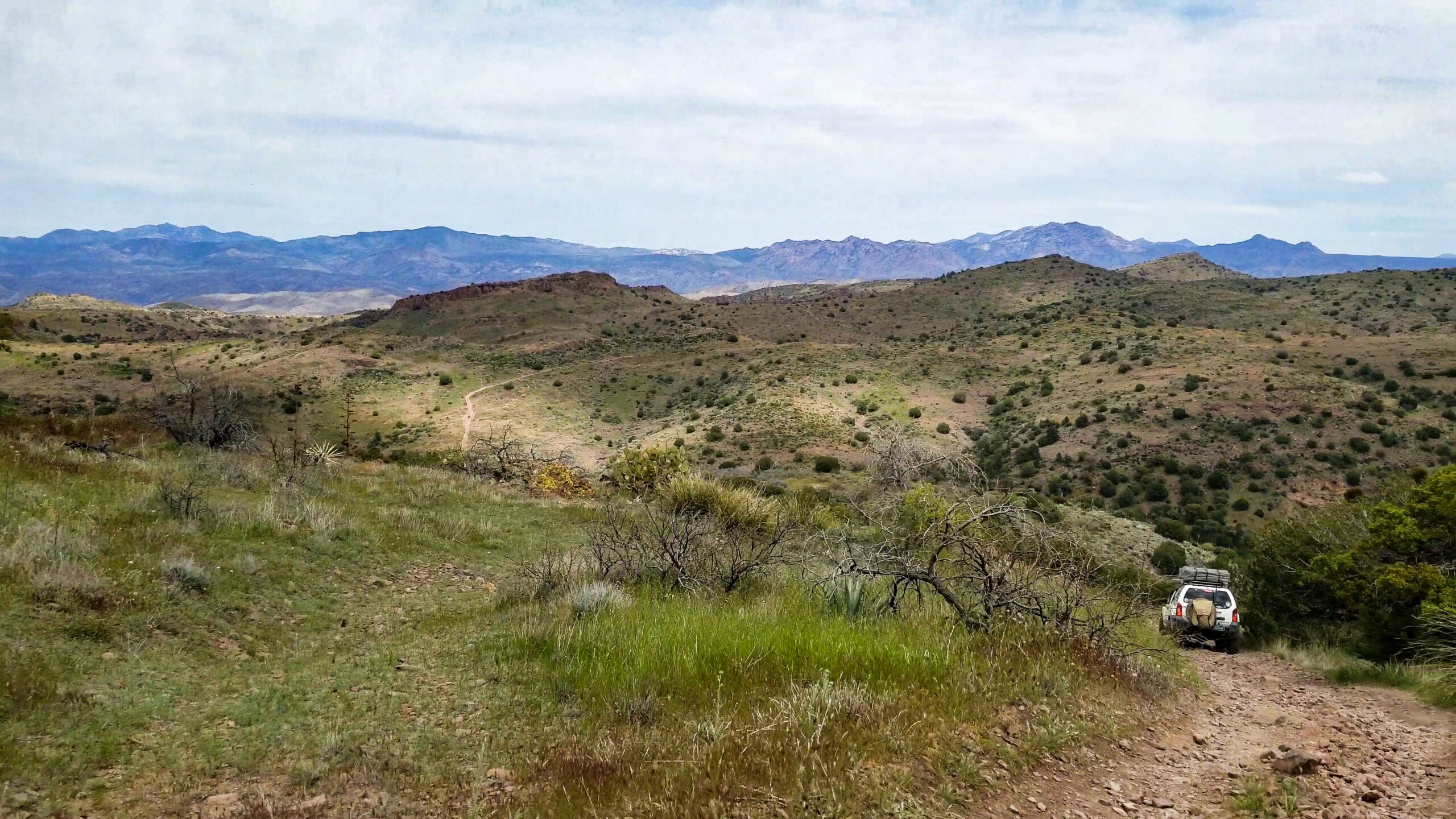Your cart is currently empty!
Posted in
Preview – ISSUE 66: Sage Grouse Proposals Threaten Restrictions Across Millions of Acres<!–
Weekly Newsletter Issue 66 | Apr 13, 2024
Sage Grouse Proposals Threaten Restrictions Across Millions of Acres
We’re not the only ones who love exploring primitive, backcountry dirt roads!
There has been a long debate over the Sage Grouse with environmental advocates pushing to have the species listed under the Endangered Species Act. In order to prevent an endangered species listing, a Sage Grouse Land Use Plan was developed. The Bureau of Land Management created this plan in 2015 in order to protect the species and its habitat, which has kept it off of the endangered list. The species still has yet to be listed, therefore the BLM is not required to treat Sage Grouse and its habitat as endangered or threatened, and should not be managing land as such. The plan was amended in 2019 and the BLM is proposing additional amendments.
These changes will affect the states of California, Colorado, Idaho, Montana, Nevada, North Dakota, Oregon, South Dakota, Utah, and Wyoming. It includes 77 resource management plans across these states and 69 million acres. Comments will be accepted through June 13, 2024. You can read the environmental impact statement as well as the proposal to address habitat changes. One concern is it would designate millions of acres as Areas of Critical Environmental Concern (ACEC). ACEC’s are historically restrictive, have closed roads, and shut down access for all types of users.
The pressures and effects on Sage Grouse vary state by state. The BLM should not be creating a broad land use plan that is restrictive in nature that will affect users who are not proven to have a significant negative impact on the species. One size fits all will not be beneficial to the species. Although studies have shown a decrease in the population, research shows that this is due in part by wildfires and urbanization. The Sage Grouse are being used as a pawn in a greater scheme to control more of our federal land even when the species population levels and health do not warrant listing.
Submit a comment to the BLM to oppose unnecessary access restrictions:
Defend Your Ground Podcast
Episode 46: Problems with the Grandview Travel Plan
In this episode of the Defend Your Ground podcast, Ben and Simone discuss the Grandview travel management plan in Idaho. They highlight the problems with the plan, including outdated information, missing routes, and the potential closure of desert racing routes. They also discuss the lack of analysis of social and economic impacts, as well as the potential connection between the plan and the development of solar farms in the area.
Action Alerts
1. DEADLINE EXTENDED TO APRIL 15 – Grandview Travel Management Plan: 65% of routes at risk
The Owyhee region of southwestern Idaho is accepting public comment for their final travel management plan of the area. The Grandview travel area hosts 1,365 miles of open OHV routes year round along with one backcountry airstrip. These routes give way to numerous permitted motorcycle races throughout the year. The planning area encompasses 251,000 acres, and because it’s only a 90 minute drive from Boise, it is a popular area for all kinds of OHV interests. It is one of the best single track riding areas in southern Idaho.
Of all the areas we’ve reviewed in the Owyhee region in the recent months, this is the area with the most proposed closures. The proposals don’t seem to reflect the way that users are recreating on the landscape. If this is an area you visit, we need you to add your feedback.
Please submit a comment below to the BLM in order to make your voice heard. The link includes more briefing materials and links to the BLM’s interactive map. If you have additional insight to this area, include that at the beginning of the comment. Comments will be accepted until April 15, 2024.
2. Deadline Approaching: Rough Hat Clark County Solar Project in Nevada
The Bureau of Land Management in Clark County, Nevada has released the draft plan and environmental impact statement for the Rough Hat Solar Project. Public comments are being accepted on the proposal through April 11, 2024.
This is one of many proposals we are seeing throughout the western United States. This specific project is located in the Pahrump Valley, next to the established Copper Rays solar farm. There is a massive push to develop solar farms on public lands. In 2012 the BLM created the Western Solar Plan to identify Solar Energy Zones (SEZ) that were best suited for solar farms in which these types of projects would be prioritized. The BLM is currently in another public comment phase to update the Western Solar Plan to include more areas acceptable for solar farms and available for a streamlined permitting process. The Rough Hat Solar Project however is not within an SEZ. BLM should only be allowing solar farms within SEZ’s while there is currently available land for those types of projects. Solar projects, if approved should not be developed in areas that are currently used for other uses. Solar use should not be prioritized over all other uses.
Recreation does occur within the 2,433 acres of the proposal and around the project area. The project is expected to close these acres of land for approximately 30 years.
3. Bears Ears Draft Resource Management Plan Released for Public Comment
Located in the rural corner of Southeastern Utah, the Bears Ears National Monument has been a point of controversy for nearly a decade. In 2016 President Obama initially used the Antiquities Act of 1906 to designate 1.3 million acres as a national monument completely bypassing Congress and abusing the Antiquities Act which gives presidents the authority to protect the smallest area of land possible. When the monument was created it required the BLM to create a resource management plan (RMP) to dictate the management of the monument. A year later, President Trump reduced the monument’s boundaries, it required a new resource management plan. In 2021, President Biden re-expanded the monument, in fact making it even larger the the original boundaries triggering yet again the process for a new resource management plan.
The Bureau of Land Management in conjunction with the U.S. Forest Service have released the proposed alternatives for the public to submit comments and feedback on for the next 90 days until June 11, 2024. Alternative A is the current management objectives, goals and restrictions. Alternative B-E give the proposals the agencies are considering moving forward with the management of this massive area.
4. Help Us Oppose the Dolores River Canyon National Monument
Along the Dolores River in Southern Colorado families camp, raft and recreate. We have recently seen a surge in social media posts promoting the creation of a national monument out of the Dolores River Canyon. Surprisingly, these posts suggest that the motivation for the advocates supporting the monument is because they used to camp along the river when younger with their families. National monument designations usually lead to the kinds of restrictions on recreation use that we see in wilderness areas or national parks. As such, it is highly unlikely that there will be any primitive dispersed camping allowed in a Dolores River Canyon National Monument. To the extent that any camping will be allowed at all, it will be in restrictive developed campgrounds that require a reservation, and they won’t be anywhere near the riparian corridor of the river itself.
It is because of restrictions like this that we are opposing the creation of giant national monuments through the abuse of the Antiquities Act in federal court court. We continue to oppose the creation of national monuments throughout the west including the Dolores River Canyon National Monument.
Lost Trails Guidebook Sponsor Highlight
MORRFlate is a strong supporter of numerous offroad advocacy groups. Anytime they donate product for giveaways and raffles, they require those running the giveaways to support groups working to keep trails open. We are often the beneficiaries of this support. Thank you Morrflate!
NEWSLETTER CLUB AND ORGANIZATION SPOTLIGHT
The BlueRibbon Coalition is excited to announce that the following organizations have recently either donated to our Moab Fight or joined as organization members:
Mountain Country Transportation
We love to see all these businesses and organizations joining the fight! We know that we couldn’t do what we do without the support of these organizations. If your business or club isn’t on this list: Business/Organization Members, contact us today. As passionate recreation enthusiasts, these clubs and businesses understand the importance of fighting for and protecting our public lands and trails for future generations to enjoy. By renewing their support, they are helping to ensure that the BlueRibbon Coalition can advocate for responsible access to our public lands. We are grateful for their ongoing commitment to our mission and look forward to working together to keep the trails open and accessible for all.
Tags:
You may also like…

Visit the AZBackroads.com Store

Please Become A Member
We need your help to keep our backroads open. Please join today!








